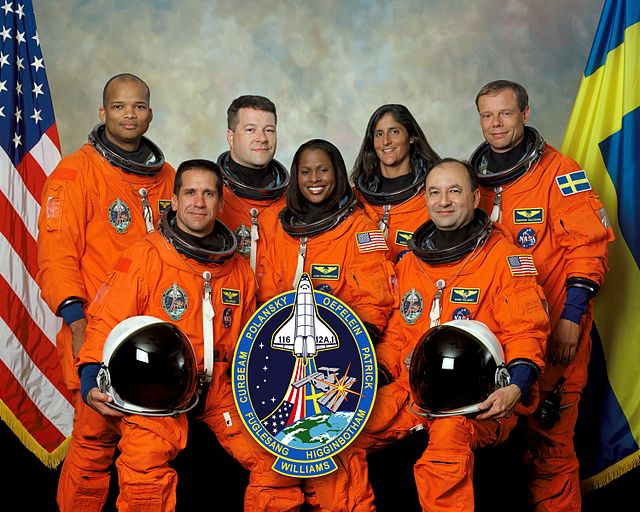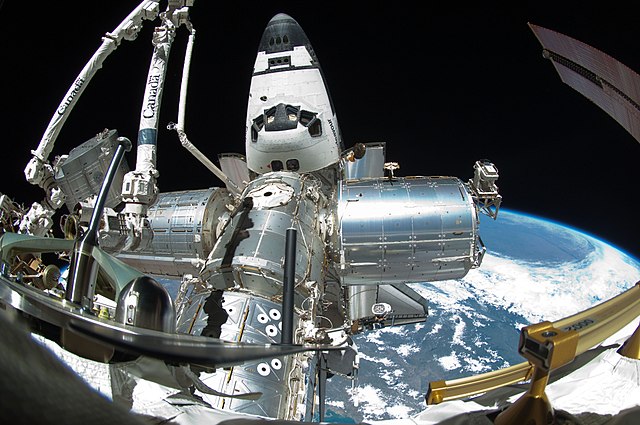STS-116 was a Space Shuttle mission to the International Space Station (ISS) flown by Space Shuttle Discovery. Discovery lifted off on December 9, 2006, at 20:47:35 EST. A previous launch attempt on December 7 had been canceled due to cloud cover. It was the first night launch of a Space Shuttle since STS-113 in November 2002.
Discovery's Canadarm hands the P5 truss segment to Canadarm2, prior to its installation on the ISS.
Back (L-R): Curbeam, Patrick, Williams, Fuglesang Front (L-R): Oefelein, Higginbotham, PolanskySpace Shuttle program← STS-115STS-117 →
A photograph of the International Space Station after STS-116 with the new P5 truss segment
In the Space Station Processing Facility, an overhead crane moves the P5 truss for mission STS-116 to the payload transfer container.
International Space Station
The International Space Station (ISS) is a large space station assembled and maintained in low Earth orbit by a collaboration of five space agencies and their contractors: NASA, Roscosmos (Russia), JAXA (Japan), ESA (Europe), and CSA (Canada). The ISS is the largest space station ever built. Its primary purpose is to perform microgravity and space environment experiments.
Oblique underside view in November 2021
Comet Lovejoy photographed by Expedition 30 commander Dan Burbank
Expedition 8 Commander and Science Officer Michael Foale conducts an inspection of the Microgravity Science Glovebox
Fisheye view of several labs and the Space Shuttle








